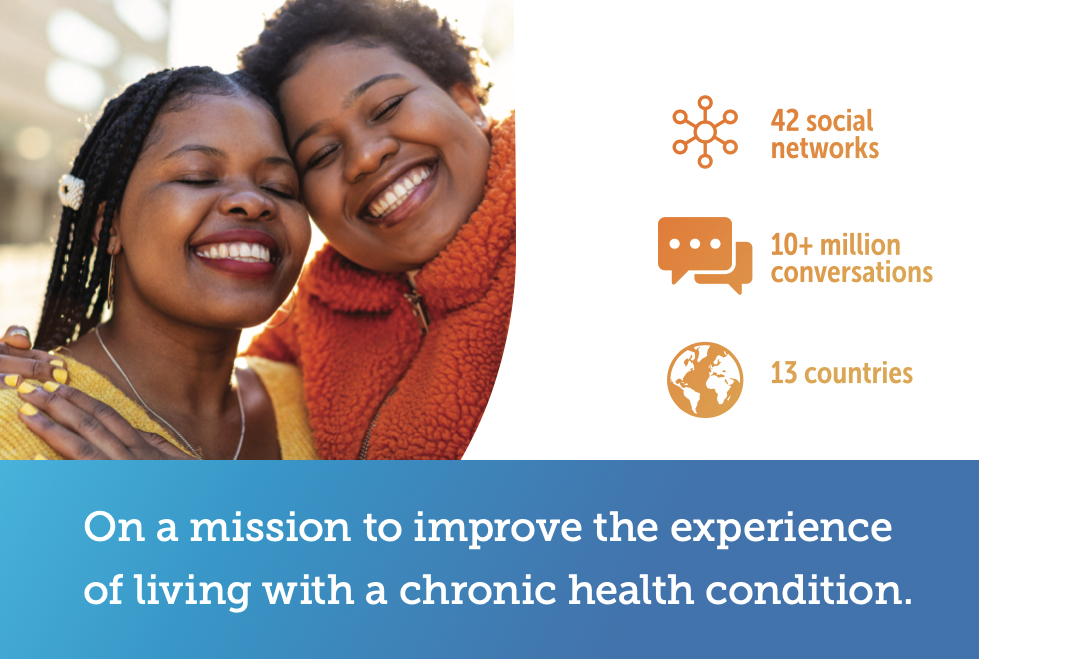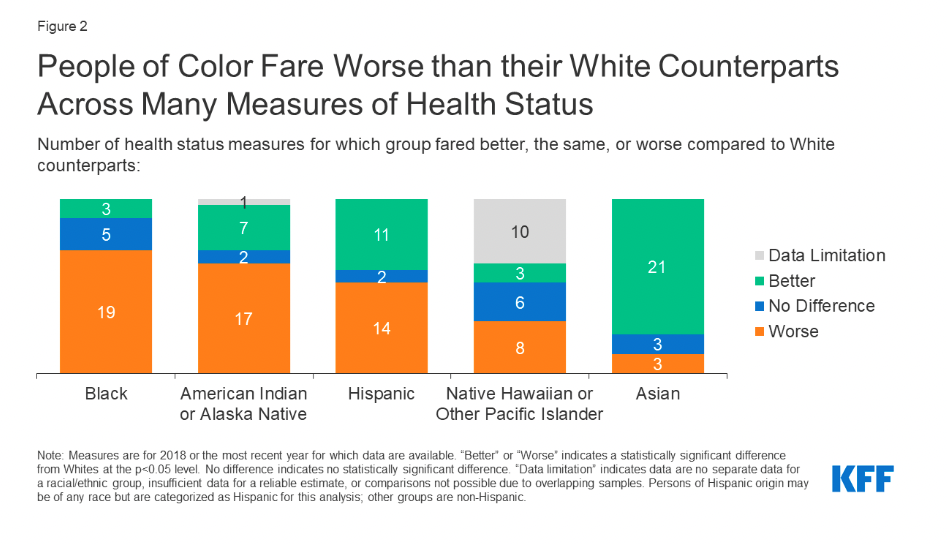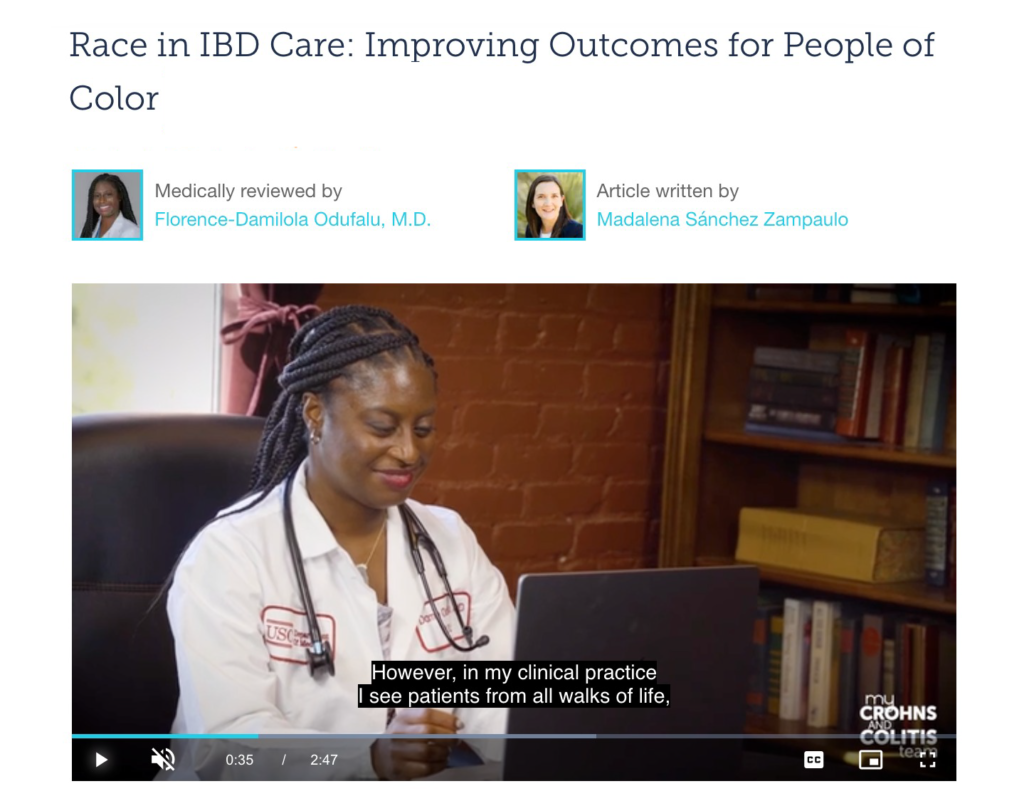 June 2, 2022
June 2, 2022
How You Can Directly Impact Health Inequities
If you’re involved in healthcare in any way, now is a good time to review how much of your efforts in 2022 work to uproot health inequities that impact health outcomes for millions. Besides it being the just thing to address, it is financially worth billions in savings to the US healthcare system. The pandemic proved to exacerbate access to health care and quality of care for marginalized communities. A study from the Kaiser Family Foundation further illustrates this.

Here’s what we’re doing at MyHealthTeam. We are inspired by what others are doing across the health ecosystem and trying new ways to engage and educate our millions of community members. We’ve taken three approaches.
1. Empower Patients to Advocate for Themselves – Confront Racial Bias
COVID’s outsized impact on communities of color shined a spotlight on racial disparities in healthcare in this country. But this is a long-standing issue with very real negative consequences. The Center for Health Equity Advancement at University of Pennsylvania Medical School reports that Black, Latinx and other people of color in the U.S. are twice as likely as their white counterparts to live with a chronic disease.
The good news is that a growing movement of healthcare innovators and disruptors are tackling this problem head on, including:
- Health in Her Hue is a digital platform specifically designed to connect Black women and women of color to culturally sensitive healthcare providers, evidence-based health content, and community support. Started by two Black female founders, the company is creating a new norm for generations of women of color.
- And this is just one example of many entrepreneur-led efforts to redefine the health landscape. Jumpstart Nova is a venture fund solely focused on backing Black healthcare founders across the health landscape. The portfolio already includes transformative companies within tech-enabled services, biotech, diagnostic devices, health IT, digital health, and consumer health and wellness – with additional investments joining the fold regularly.
The MyHealthTeam Approach
Two of our guiding principles at MyHealthTeam are to listen with empathy and to provide solutions that empower our members – focusing on practical tips that an individual can take (and recognizing that it is unfair to place the burden to improve the system itself on an individual). From listening to members of MyCrohnsandColitisTeam, MyHealthTeam validated what a growing body of research has shown: it often takes much longer for Black, Latinx and other people of color to receive proper diagnosis of and treatment for IBD. This has served as a catalyst for us to develop partnerships with mission-driven organizations focused on improving health equity within the IBD community.
In order to accelerate the journey to diagnosis and treatment, we teamed with Janssen to launch the Understanding Health Equity and IBD Resource Center and created videos with two doctors who specialize in IBD care and are passionate about addressing the unmet needs of patients of color – Dr. Adjoa Anyane-Yeboa, a gastroenterologist at Massachusetts General Hospital in Boston, and Dr. Florence-Damilola Odufalu, a gastroenterologist and assistant professor of clinical medicine at the University of Southern California’s Keck School of Medicine. The videos focus on how to effectively advocate for yourself within the healthcare system, providing members with actionable information that helps them more effectively talk with their doctors about symptoms, treatment options, and managing the wide-ranging impacts this disease has on quality of life.
2. Meet Patients Wherever They Are: Bring Them the Medical Experts
The gap between urban and rural populations in access to quality health services and resources is hard to ignore – and the consequences are severe. According to the CDC, the 46 million Americans who live in rural areas are more likely to die prematurely from all of the five leading causes of death: heart disease, cancer, unintentional injury, chronic lower respiratory disease, and stroke.
A couple of recent initiatives focused on closing this gap recently caught my eye:
- Public Health AmeriCorps and the American Heart Association are teaming up to grow a sustainable pipeline of public health workers, reduce cardiovascular risks among rural residents, and accelerate the adoption and implementation of systems changes to improve access to quality care. Starting in September, 100 AmeriCorps members will deploy across 50 rural communities in 26 states – prioritizing areas with high rates of uncontrolled blood pressure or cardiovascular disease, increased social vulnerability, and shortages of health professionals.
- Homeward recently launched, with backing from investment firm General Catalyst, to deliver both virtual and in-person care to people living in rural areas. Its telehealth and remote monitoring services will rely on cellular networks rather than broadband, which can be harder to find outside of urban centers. Mobile units will deliver in-person care to patients in their homes. And the company has teamed with local hospitals and physicians as well as regional Medicare Advantage plans to ensure patients get the care they need.
The MyHealthTeam Approach
Members of MyHealthTeam’s social networks are widely geographically dispersed, and we know that many do not have easy direct access to the foremost specialists treating their condition. So, we’ve been actively building the MyHealthTeam Medical Expert Panel in order to bring actionable expertise directly to them – via articles, videos and virtual events.
One great example of this is the virtual event series we’ve hosted on MyMSTeam with Dr. Aaron Boster, a renowned neurologist who specializes in multiple sclerosis. Over the past couple of years, we’ve hosted 9 events with Dr. Boster – each of which has attracted hundreds of registered attendees and thousands of on-demand viewing sessions. Topics have ranged from symptoms and side effects to cognition and sexual function to anxiety and depression and much, much more. The feedback from members has been overwhelmingly positive, with people expressing their appreciation for Dr. Boster’s straightforward style, empathetic approach, and practical guidance. With 1 in 7 Americans living with MS now a member of MyMSTeam, we’re so proud to be making this information and access available to such a large portion of the MS community – regardless of where they live.
3. Shine a Spotlight on Women’s Health Concerns – Provide Actionable Advice
Multiple studies have underscored that many women feel overlooked and under-served in today’s healthcare system, including an NBC TODAY / Survey Monkey poll that found 52% of women find gender discrimination in health care to be a serious issue (compared to only 36% of men) and 17% of women reporting they’ve been treated differently by doctors because of their gender (compared to only 6% of men).
I’m heartened to see several interesting companies tackling this issue head-on, super-serving the needs of women, such as:
- Tia, which bills itself as “the modern medical home for women,” offering a suite of services ranging from primary care to gynecology, mental health to wellness. Inclusion is embedded into the company’s approach, with a commitment to serving the trans and non-binary communities, an affordable pricing structure, and a personalized manner in care delivery – both in-person and virtual.
- KindBody, an integrated provider of fertility care and family-building services that is working to expand employee benefits packages. The company focuses on demystifying the conversation and removing the stigma around fertility issues and is actively working to expand fertility care access to more women and families.
The MyHealthTeam Approach
A hot topic of conversation among many women across our social networks has always been the elongated and frustrating path to diagnosis and treatment that too many of them experience. This is especially true among women on MySpondylitisTeam. The harsh reality is that the typical journey to a spondyloarthritis diagnosis for women is 2.5 years longer than the typical journey for a man. During this gap, long-term damage can be done that makes the condition harder to treat. Many doctors were actually trained to believe this is a “man’s disease,” and the symptoms can differ by gender. Thankfully, HCP education and awareness are improving – as are testing and diagnostic approaches.
But we – along with our partner UCB – wanted to do more. So together we launched the Women & Axial Spondyloarthritis Resource Center, which directly addresses the unique experiences and challenges women face in working with their doctors to identify and understand the condition. Some of the most popular articles address topics such as the different symptoms women may experience, the links between anemia, spondylitis and fatigue, and special considerations for women who are or want to become pregnant while living with spondylitis.
Learning from our shared pandemic experience, so many across the health ecosystem are re-imagining ways to address the deep inequities laid bare over the course of these past two years. They were long in the making, of course, and it will take a concerted, sustained multi-dimensional effort to address them. But I’m encouraged by the innovative approaches coming to life, and we at MyHealthTeam are committed to helping create more equitable access to healthcare information and resources across our 40+ condition-specific social networks. I am inspired by our communities and am committed to pursuing continuous improvement.
Have you seen other innovative approaches that are having an impact? Do you have an idea for something more we can do to live up to our commitment? Reach out. I’m at mary@myhealthteam.com.




